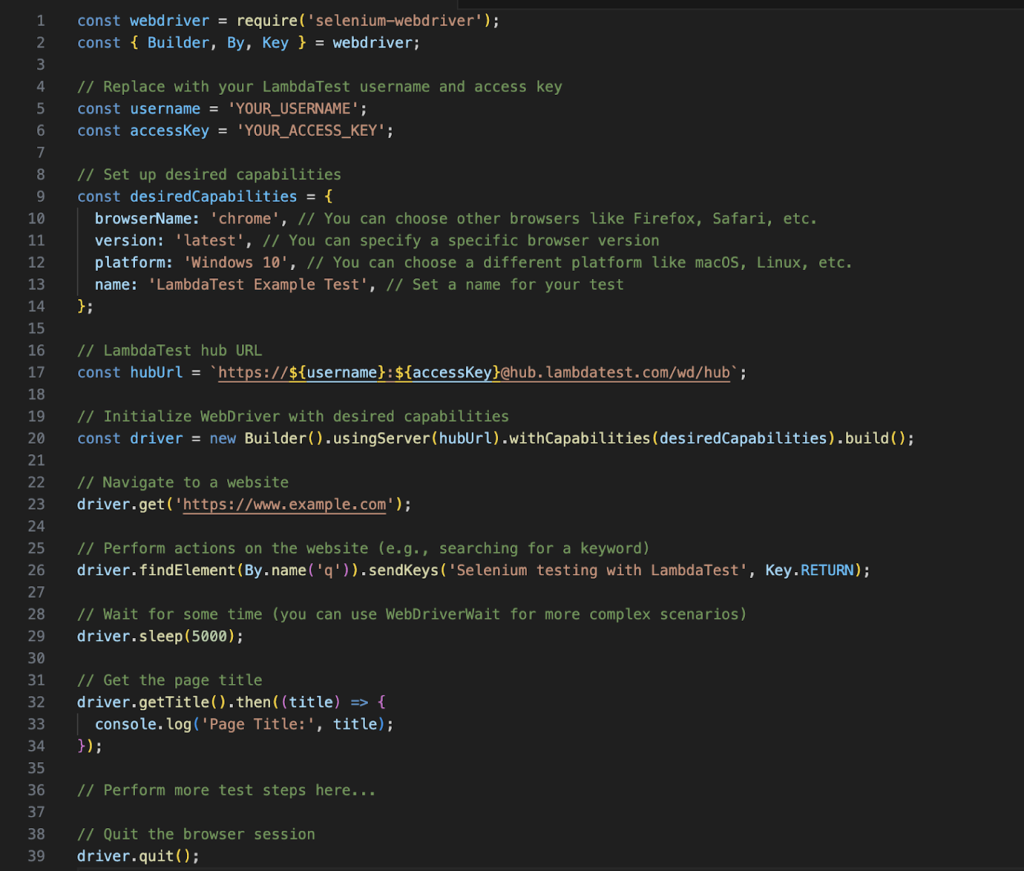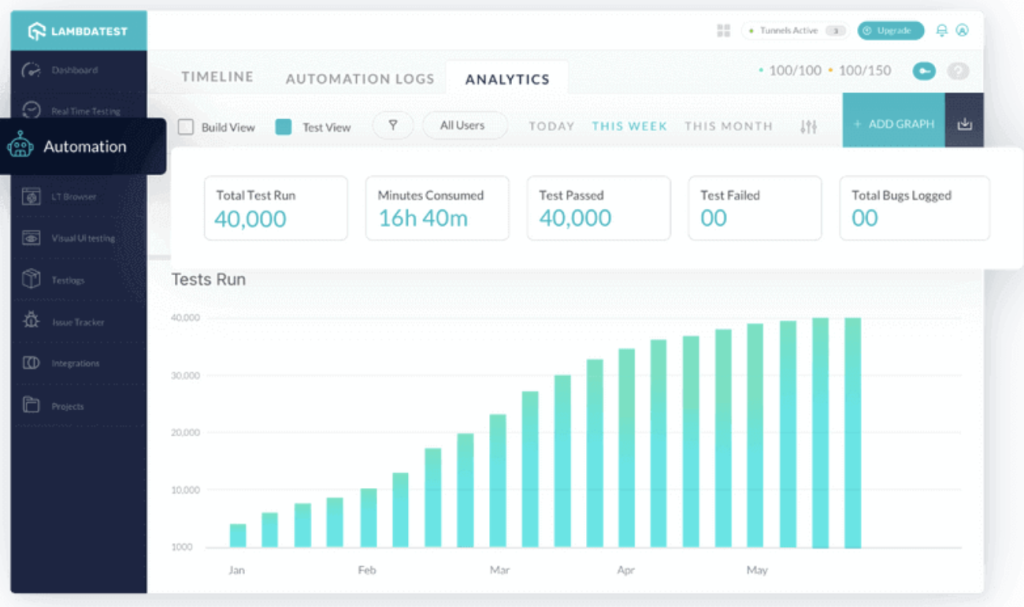The application testing industry has come a long way along with the development practices of the application. For instance, during the initial years, the developers manually verified the functioning of all the elements present in the app. However, recently due to the rising complexities of modern apps, it has become almost impossible to repeat these test cases. Instead, the app testers use automation testing to verify the functioning of not only the individual elements but also the combined infrastructure. Selenium is one of the most popular names in the segment of automation testing. These two have maintained one of the top positions for over 10 years now.
So, with this article, we are going to discuss the evolution of automation testing. We will also understand how the transition from manual testing to Selenium testing has boosted the quality and efficiency of the test cases. Finally, we will also focus on some of the important tips, best practices, and integrations that can help improve the productivity of the test environment.
The Process of Manual Testing
This is the generic process of verifying the functioning of applications. By implementing manual testing, the application developers have to create testing parameters, test cases, and other dependencies to verify the functioning of the application. Since manual testing relies on the capabilities and experience of human developers, they can be restricted in certain instances. Moreover, it is a very hectic process to use manual testing for running repetitive test cases like regression testing.
However manual testing helps the developers to integrate exploratory testing and visual testing. These test cases help to test the functioning of the application when it is subjected to unforeseen circumstances or harsh use case scenarios. Some of the massive disadvantages of manual testing include its laborious testing mechanism, being prone to human errors, and its time-consuming nature.
Scripted Testing
With the rising complexity of modern apps, the testers started writing test scripts that could automatically execute the repetitive test cases. These scripts consist of various parameters that allow the system to emulate human interactions while communicating with the app. The testers also have the liberty to make all the required changes in the test scripts to improve the accuracy of the test cases. For writing the test scripts, the developers could use any programming language like Java or Python.
Although scripted testing helps improve the efficiency of the test cases, it consists of a lot of manual labor in the initial stages. This is because the developers had to manually create the automation test scripts for executing the test cases and also maintain that test data for future reference.
Exploring Selenium Testing
With the arrival of Selenium, the app-developing industry entered a new era of automation testing. This is because Selenium consisted of multiple tools that assisted at different stages of the app development. Moreover, since it was open-source, the developers did not have to invest any amount to access its features. The core infrastructure of Selenium was based on a JavaScript programming language which eliminated an extensive learning curve.
By using all the tools in the Selenium test suit, the app developers could execute the following processes in the application testing cycle:
- A modern approach for test data creation is codeless automation testing. Developers can implement this approach using the Selenium integrated development environment. In this process, the application testers had to interact with the app like a normal user. Based on these interactions and communications, the system will automatically generate the test cases in real time. Since the test data is based on real user interactions, they are highly accurate in assessing the capabilities of the app.
- However, certain developers or app development projects require manual test data creation. In such cases, testers can implement the Selenium client API to manually write the test case in any of the well-known programming languages. This tool also makes it very simple to import the test code in the native environment of Selenium for beginning the execution process.
- Finally, after creating the automation test cases, the app developers can initiate the test instances using the Selenium WebDriver. This tool can analyze the testing parameters and redirect them to the target elements for the execution process. Another major advantage of the Selenium WebDriver is that it can run all the test instances in the native window of a browser without involving any dedicated test engine.
- Selenium also has a dedicated tool for improving the efficiency of the test cases. Using the Selenium Grid, the app developers can use a parallel testing approach for running the test cases. In this approach, it is possible to initiate multiple testing instances on different configurations and machines at the same time. For this process, this tool uses the concept of a hub that is connected to several nodes. Here, each node represents all the elements present in a modern application.
Upsides of Selenium Testing
To help the new automation testers understand the importance of using Selenium testing, we have mentioned some of the most important advantages of this process:
- This testing suite provides a reliable and robust way for automating web interactions, including various communications like filling forms and clicking buttons.
- While using this test suit, the testers can write the test cases in any of their preferred programming languages. So, it becomes accessible to a wide range of testers and developers.
- The integration of parallel testing with Selenium helps reduce the test execution time and forward the application quickly toward the production phase.
- Selenium also supports the integration of Agile Methodologies like continuous integration and continuous development. Using tools like Jenkins, the developers can enable automation testing through a predetermined testing pipeline.
Challenges of Selenium and Overcoming Them
Aside from the massive advantages of Selenium, certain factors might concern the new automation testers. So, we have mentioned some of the major challenges of Selenium below:
- While using Selenium, the developers can initiate the automation test cases on only web applications. For other apps like native apps, cross-platform apps, and hybrid apps, they must look for an alternative testing tool or framework.
- The initial version of Selenium had a few shortcomings. These included a lack of dynamic web elements, errors while handling popups, and synchronization issues. However, over time, Selenium has worked on these issues with several updates. The recent Selenium 4 updates finally resolve all the above issues with the inclusion of WebDriver, better handling of dynamic elements, and improved browser compatibility.
LambdaTest and How it Boosts Selenium Testing
The integration of LambdaTest with Selenium helps massively improve the quality and efficiency of the test cases. LambdaTest is an artificial intelligence-integrated cloud-based platform for initiating and executing automation test cases on various parameters like real devices, browser versions, and other platforms. While using Selenium, LambdaTest can run the automation test cases on more than 3000 browser instances at the same time.
The integration of LambdaTest real device testing cloud with the LambdaTest API boosts the Selenium test cases in the following ways:
- The LambdaTest real device testing cloud not only has thousands of modern devices but also legacy devices and browser instances. This means that while using this platform, the app developers can guarantee the compatibility of their app on older browsers and hardware combinations.
- While working with the Selenium Grid, LambdaTest can also initiate automated cross-browser testing to further boost the stability of the application.
- LambdaTest allows the integration of parallel test execution and Agile Methodologies and also supports modern test cases like end-to-end testing, data-driven testing, and behavior-driven development.

- After executing the test cases, LambdaTest generates a detailed test report which not only consists of the test activity logs but also visual data like screenshots and videos. Using all this information, the developers can quickly navigate to the faulty elements for performing the troubleshooting and debugging process.

- LambdaTest also combines multiple test reports from real devices and emulation software to further boost the dependability of the test cases.
- It also has an elaborate support system and detailed documentation. The support system consists of live chat, over-the-phone support, and a mailing feature. Using these, the developers can gain adequate information about all the tools and features available with LambdaTest. The official website documentation provides information in simple languages and by using sample test cases about various methods, tools, and features of LambdaTest. It also has an open-source community where the developers and testers can discuss among themselves.
To execute Selenium testing with LambdaTest, the app developers only have to follow the mentioned steps in chronological order:
- For the new automation testers, the first step is to navigate to the official website of LambdaTest and sign up for a new account by following the on-screen instructions. After purchasing the enterprise license, they will receive the username and access key for running the test cases on the LambdaTest real-device testing cloud.

- Now the automation testers have to download all the dependencies, like the Selenium WebDriver and the Selenium IDE, from the official website. Then, the testers have to install it on their testing system.
- After choosing Selenium WebDriver as their preferred automation testing framework, the testers have to write the automation test case using any of the compatible programming languages like JavaScript, Python, and Ruby. In this segment, we would advise the app developers to name the test cases according to the target elements to avoid any confusion. A sample code for Selenium Testing with LambdaTest is shown below:

3. In the final step, the testers will execute the test script using the ‘run’ command available in the terminal window. After executing the test cases, LambdaTest will automatically generate the test report showing the status of the app that has been tested. It also maintains an activity log where the developers can track the testing history of all the test cases. So they can use this information as a reference to avoid any previously known errors.

The Conclusive Views
So, in this article, we discussed all the phases of application testing, beginning from manual test cases to complete test automation. It also shows how the development industry will continue to rely more and more on automation test cases in the coming years. Thus, it becomes very important for application testers and developers to continue updating their knowledge regarding all the new automation testing trends and practices. One of the most important practices is constantly monitoring the target audience to gain adequate information about their requirements and changing demands. This data will allow the testers to customize the app to serve a wider audience base. All these practices will also have a significant role in improving the brand image.







